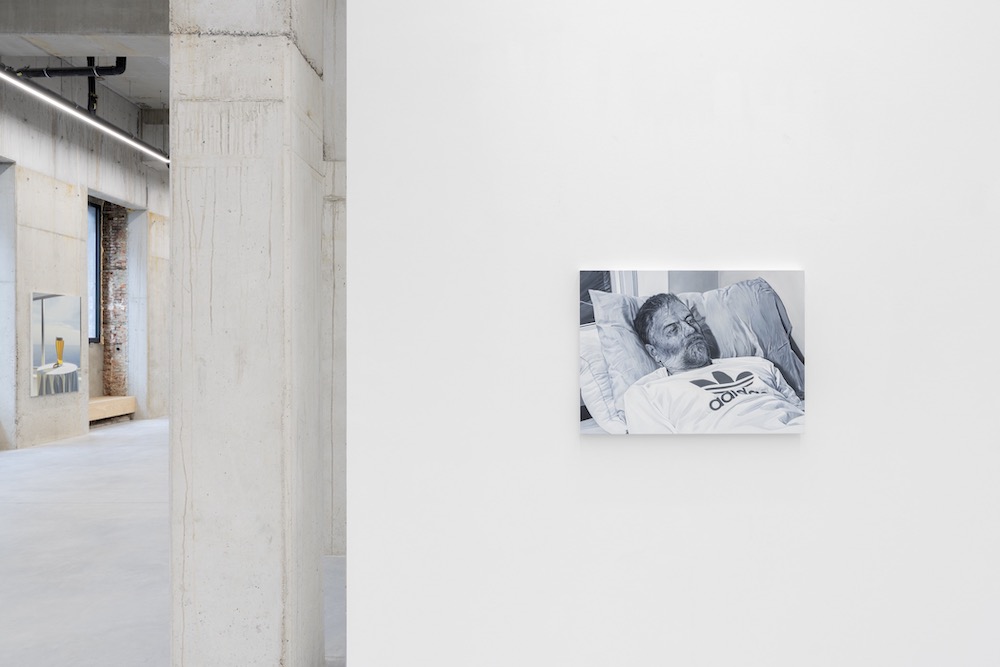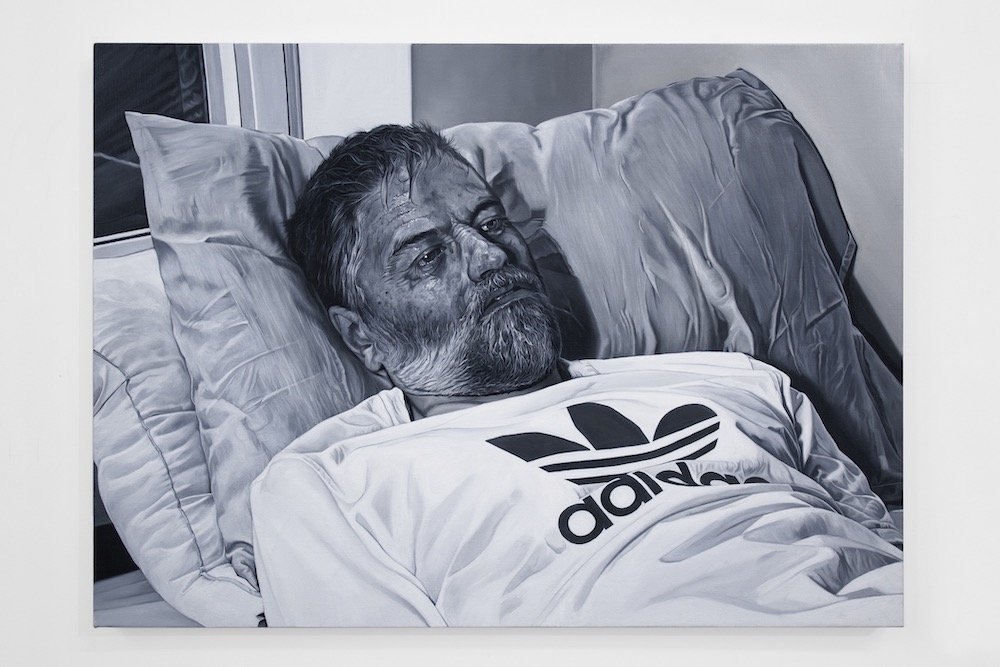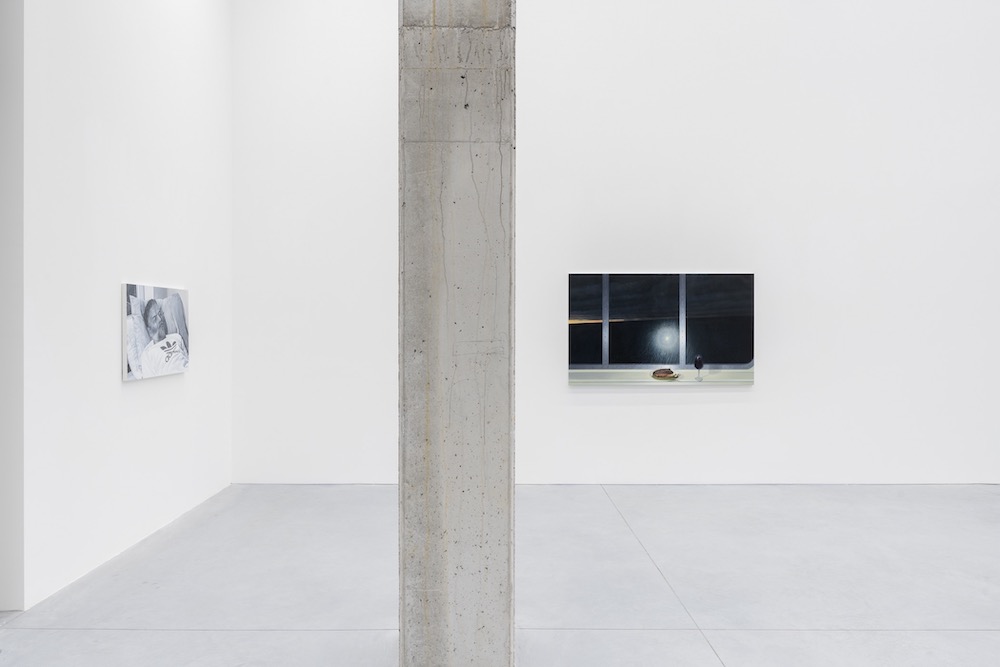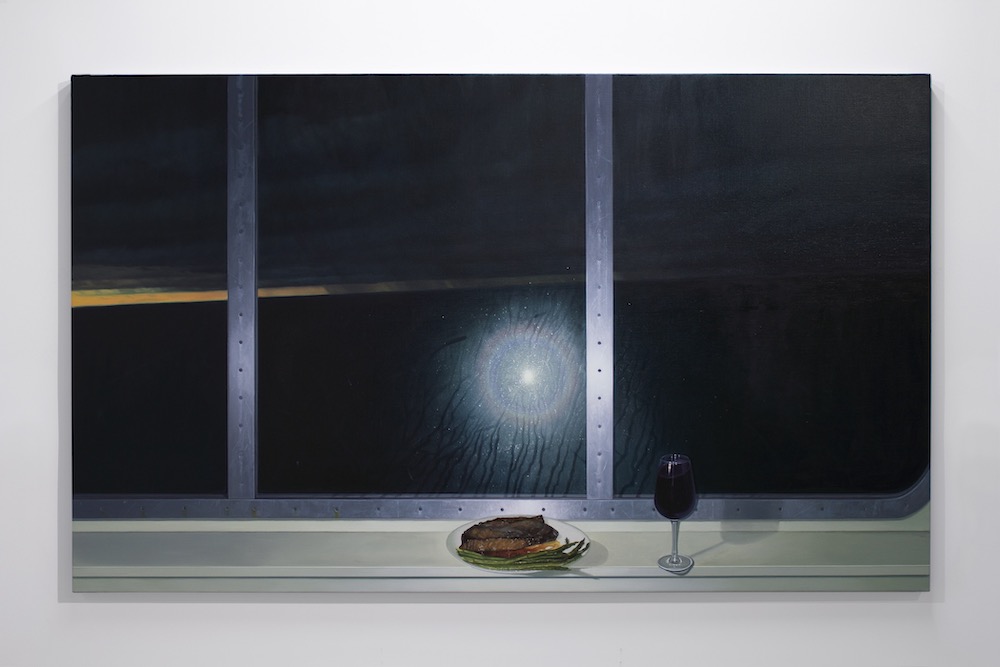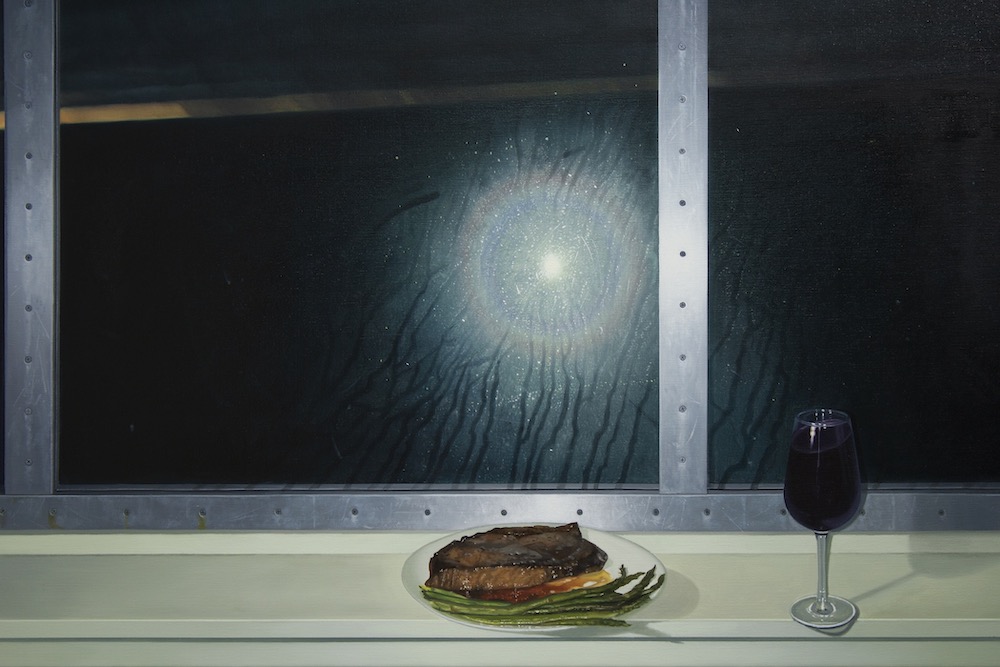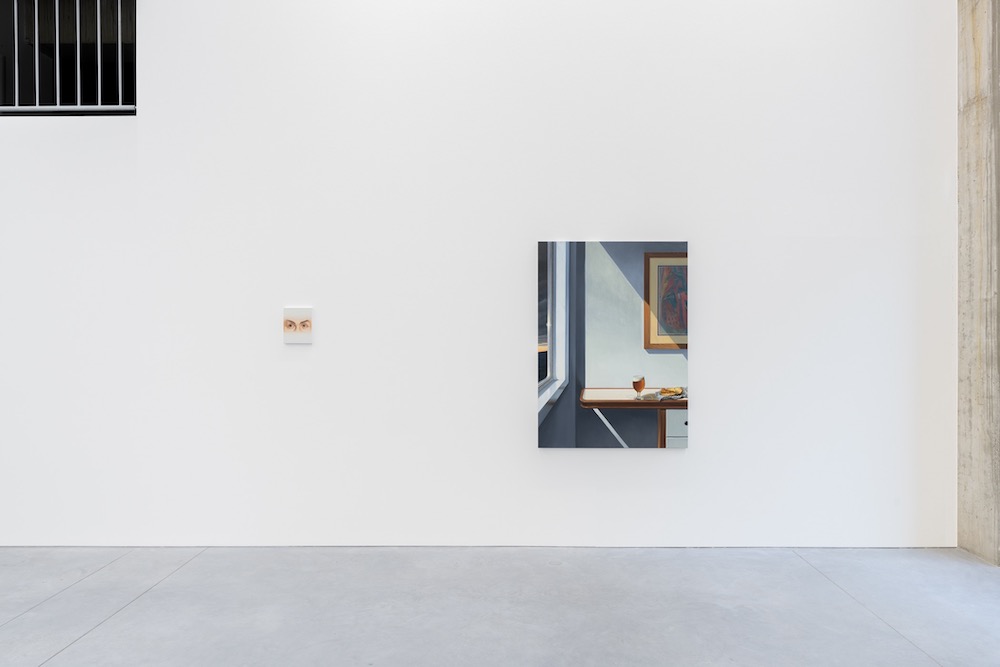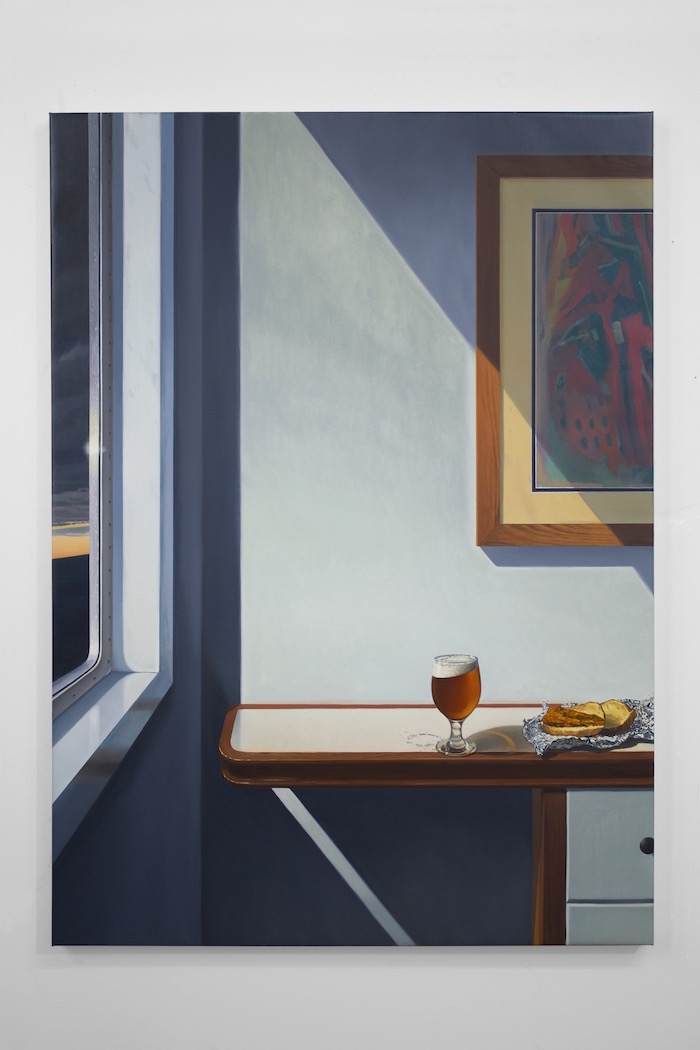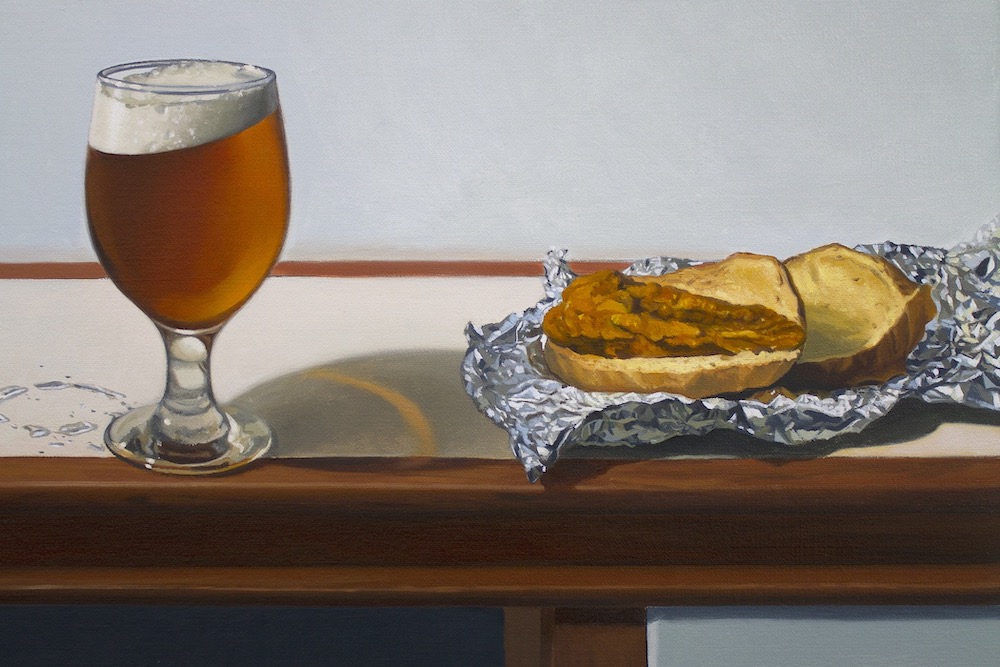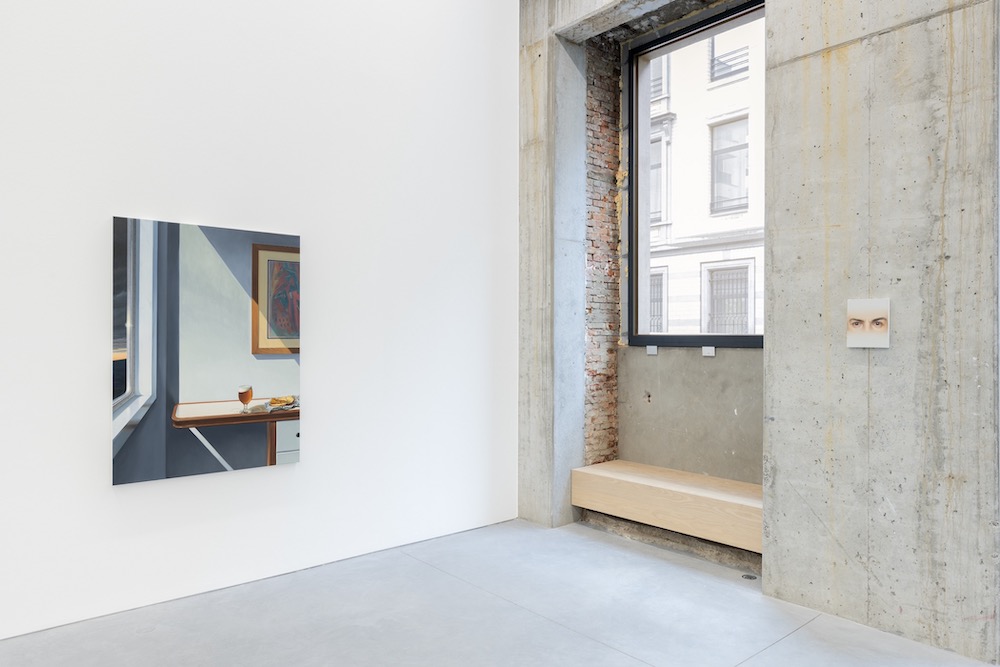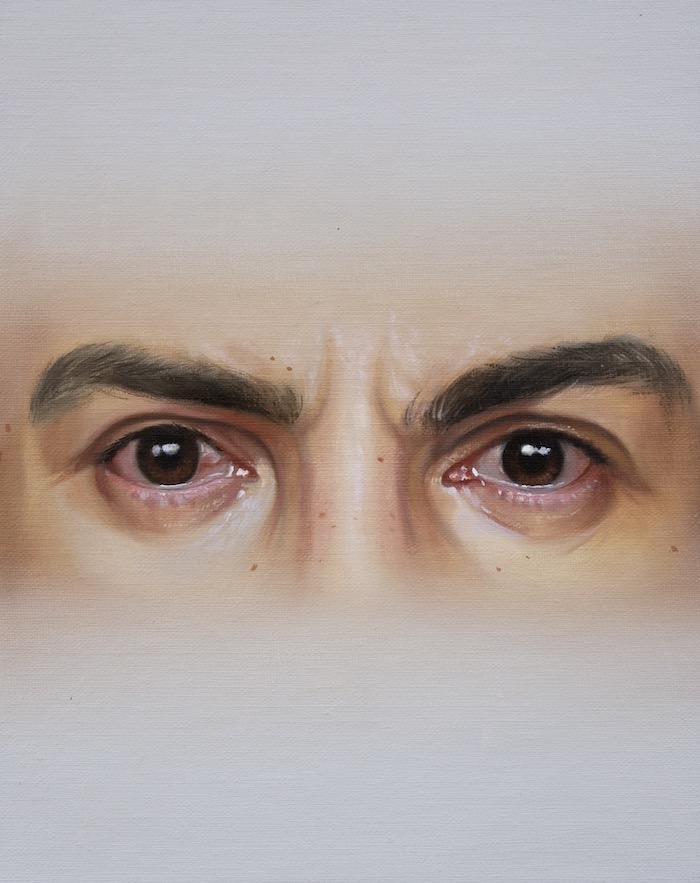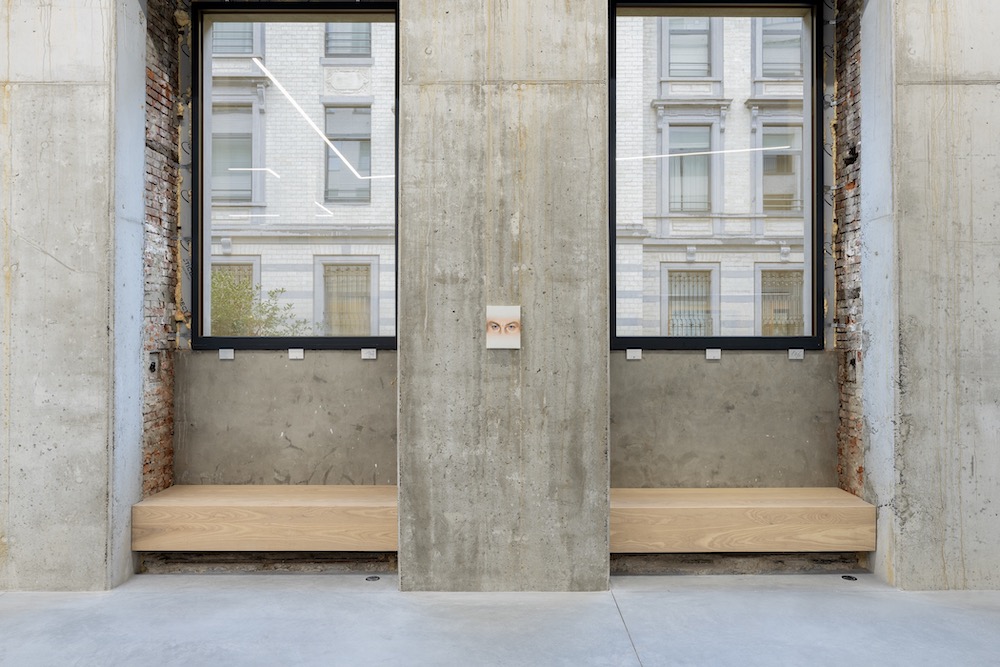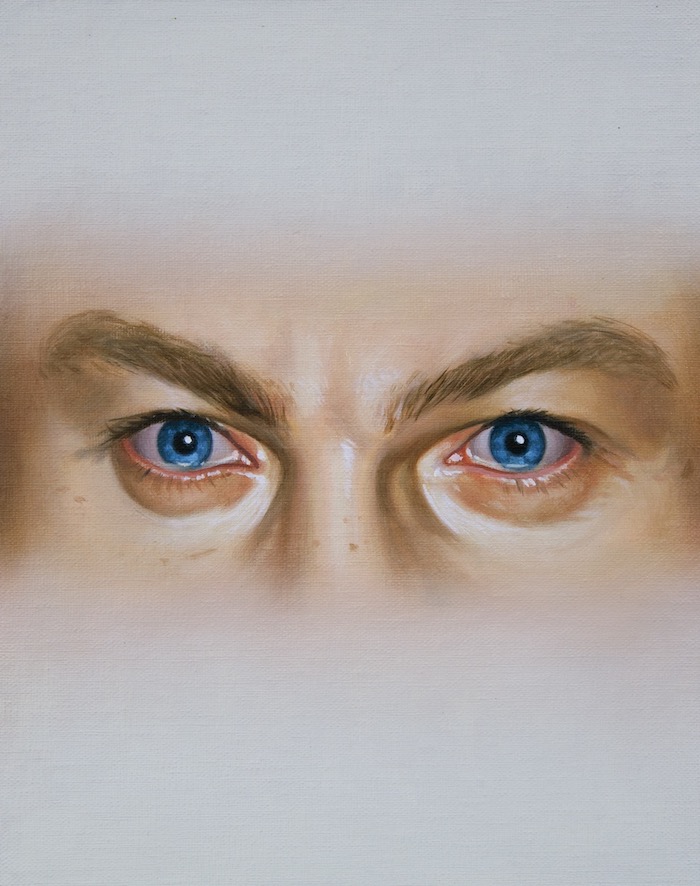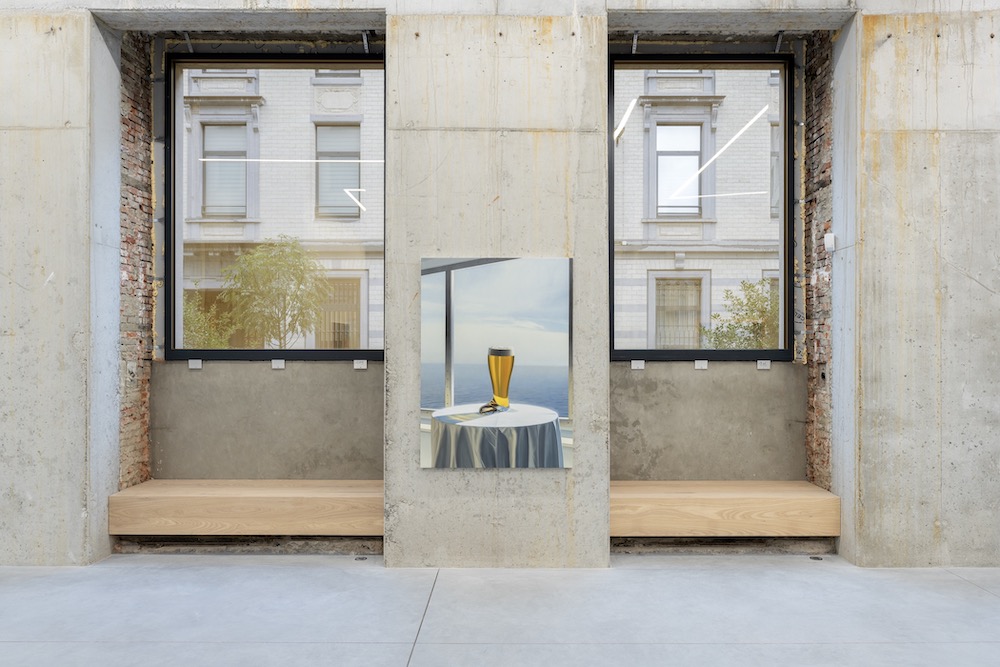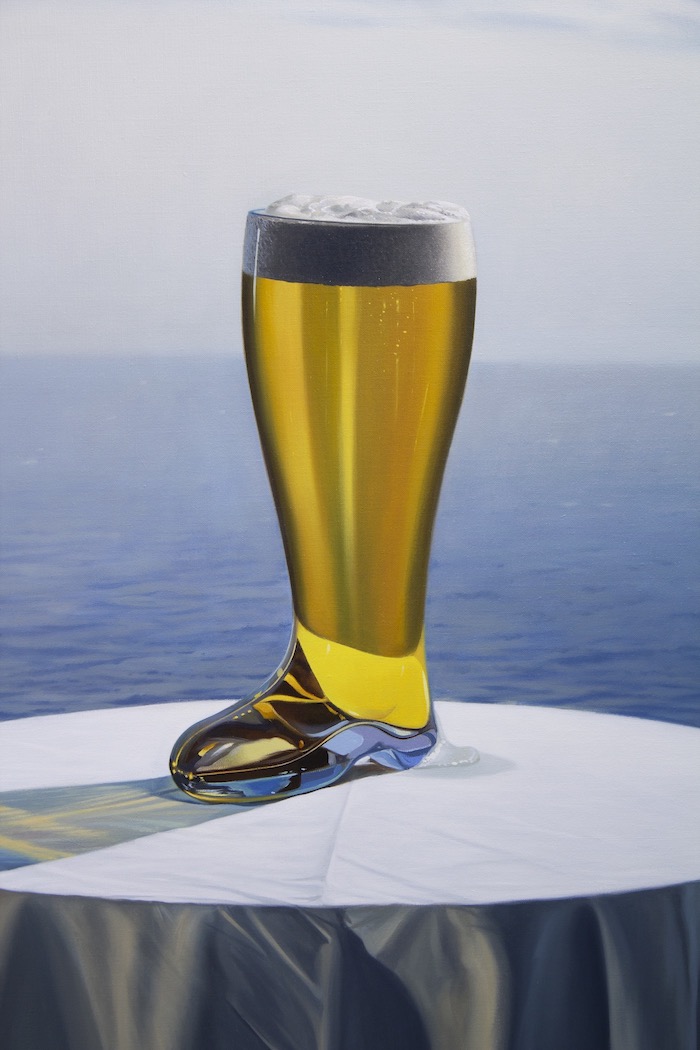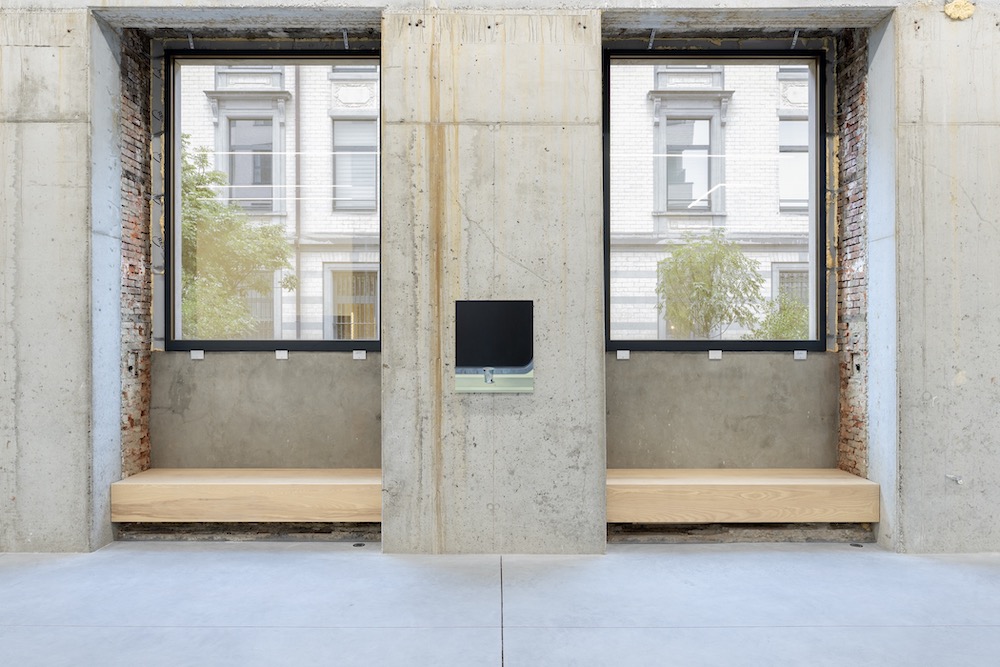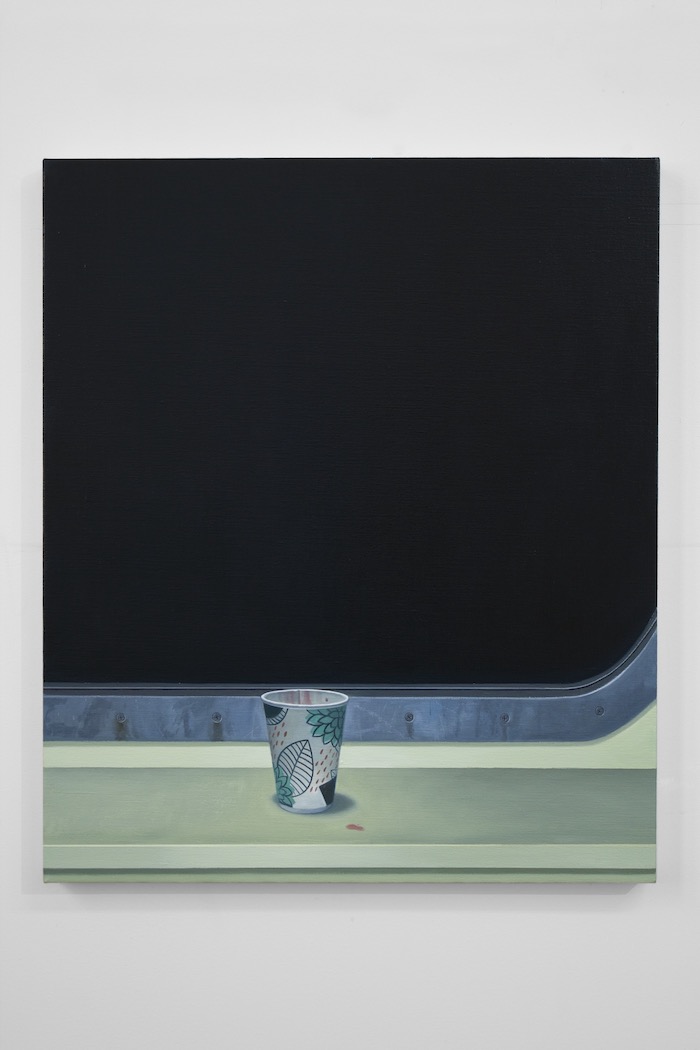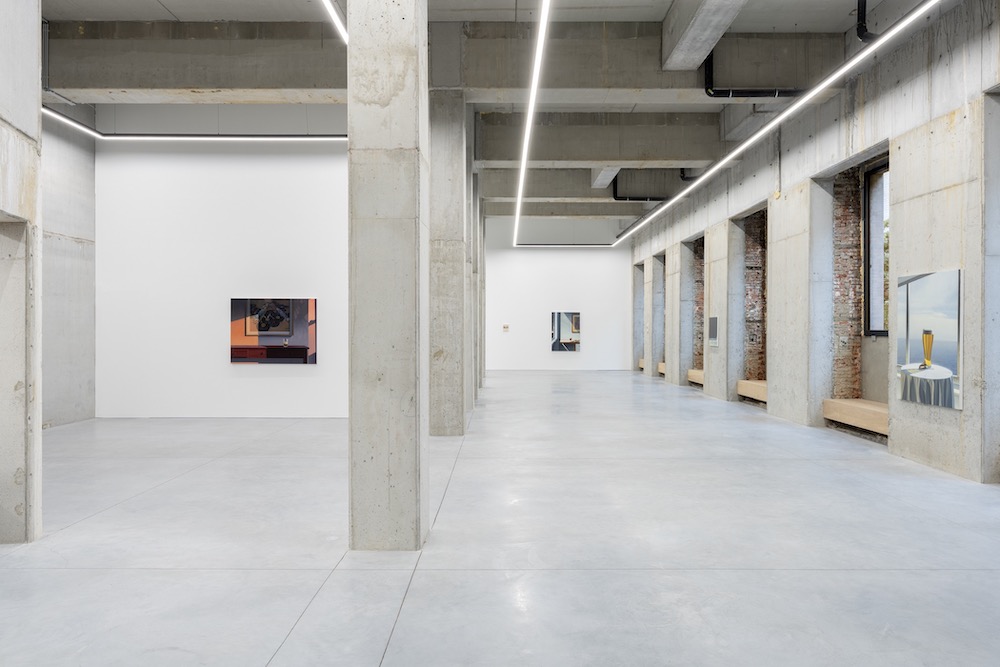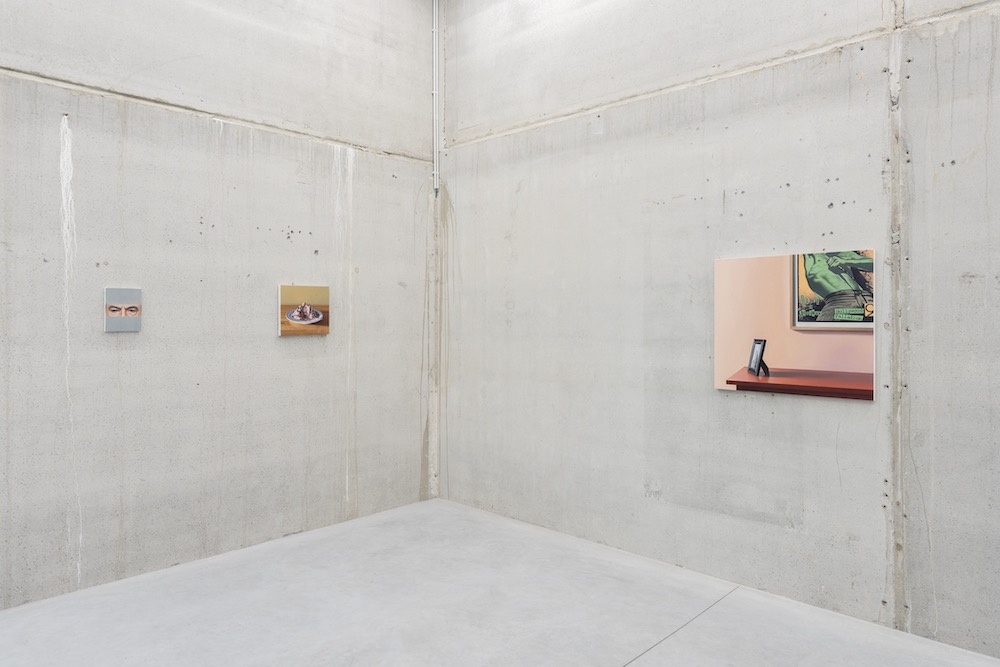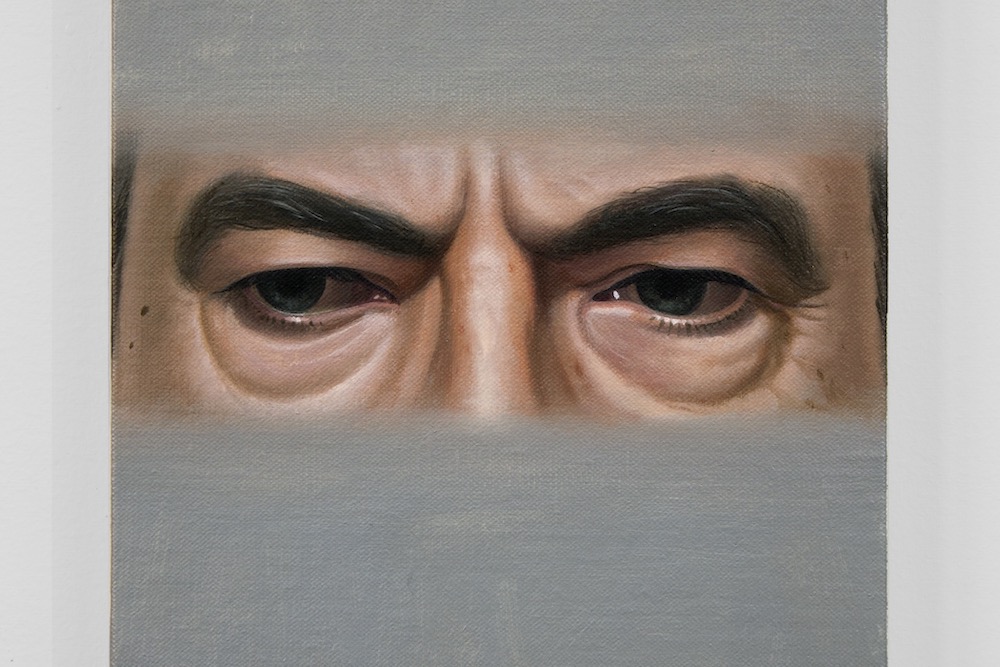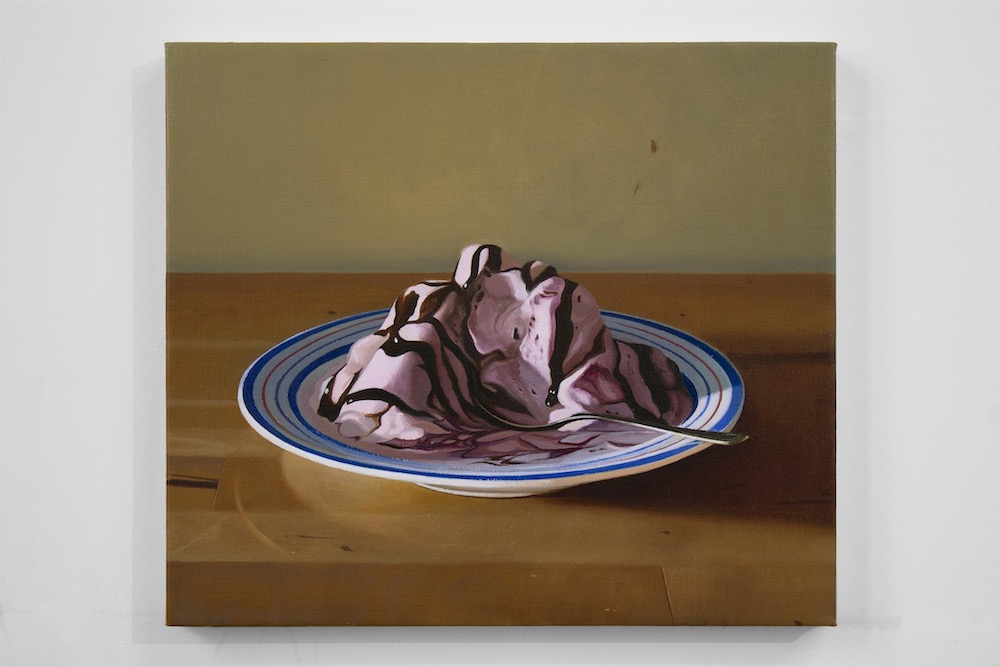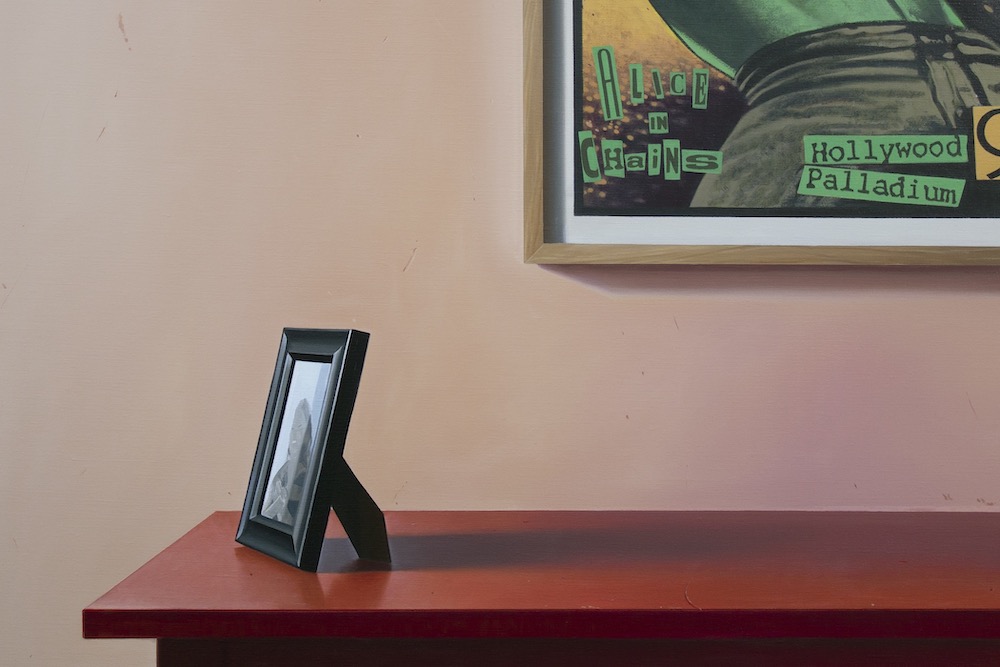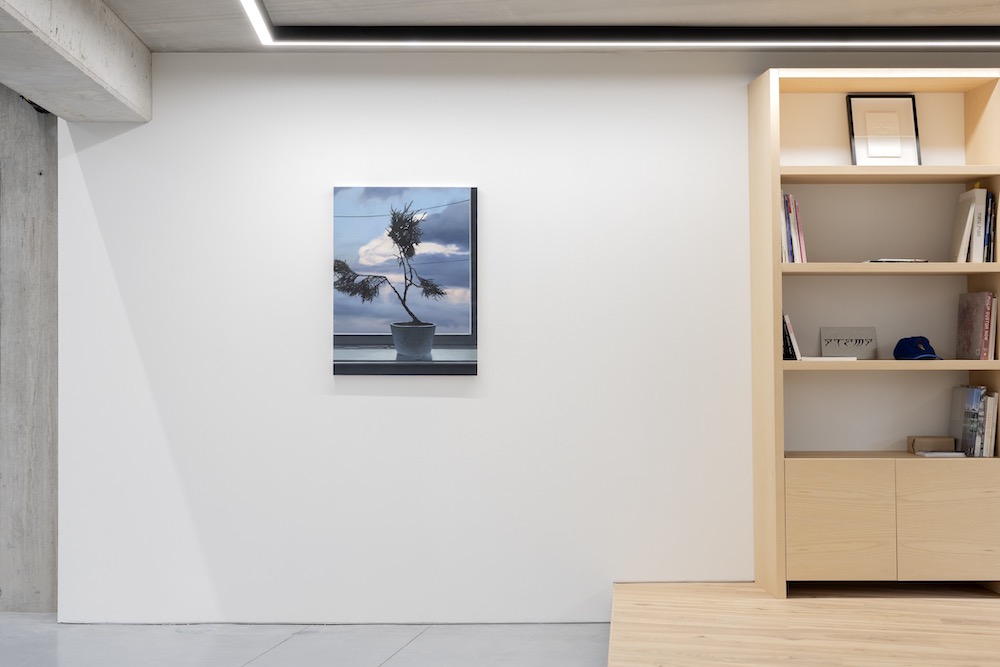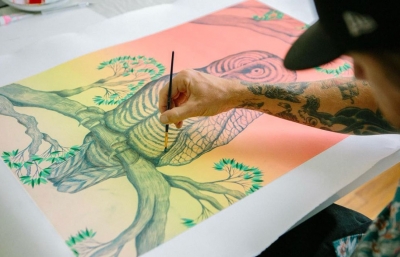Stepping away from the surrealistic assemblages that marked his past couple of shows, Paul Rouphail is back in Brussels for his second solo presentation with Stems Gallery. The Passenger marks somewhat of a turn for the artist as the whole show, which is to some extent realized with the artist and his spouse and fellow painter, Lindsay Merrill, revolves around the narrative about a man who leaves his home for a trip at sea and subsequently becomes ill.
Inspired by Thomas Mann’s novel, Death in Venice, and Michelangelo Antonioni’s 1974 film The Passenger, the entire body of twelve paintings is tightly connected in an effort to convey the ambiance of the elderly protagonist's plight. In the center of the show is the titular piece, a monochromatic portrait of the bedridden protagonist as the artist’s older, sickly self. Painted by the artist's wife and therefore clearly different from other examples in the show, the work wittily suggests having a look at all the visuals with different eyes. This idea is permeating the rest of the show in a series of small-scale portraits presented at eye-level through which the viewer is confronted against the labile glances. Exhibited in between other, larger works, this part of the show evokes the atmosphere of movie stills closeups, intensifying the emotions that are suggested with other pieces.
Arguably the most impactful part of the show is the large still-life paintings through which Rouphail constructs the cinematic, highly suggestive setting by focusing on a peculiar angle of an almost Hopper-like scene. Exclusively stripped of human presence, but with objects suggesting their vicinity, these compositions carry a great aura of mystery, especially being wrapped inside a peculiar light setting. The dimmed spotlight and overall underexposed view suggest the exceptionally quiet, unthreatening atmosphere which is interrupted by subtle glitches. It's the presence of the untouched delicately prepared meals or beverages (Icecream, 2021 or Das Boot, 2021), that creates a sublime and deeply uncertain tension within muted stillness. This is further accentuated with such unapparent nuances as a spilled drop (Wine, 2021) or a glass resting too close to the edge of the surface (Mid-Afternoon, 2021 or Supper, 2021). By including windows or show posters in these compositions, Rouphail suggests the existence of a wider world that is clearly related to the portrayed story but irrelevant at this particular moment. In addition to that, this decision elevates his technical possibilities to explore by providing a set of accompanying elements, such as light play, reflections, glares, blurs, and similar effects. So, the overall suspended calmness permeating these images is achieved through the hyper-controlled process which begins with setting up the scenes, over the consistent and all-encompassing way of stylizing them, to the meticulous rendition of all of their subtleties. —Sasha Bogojev

